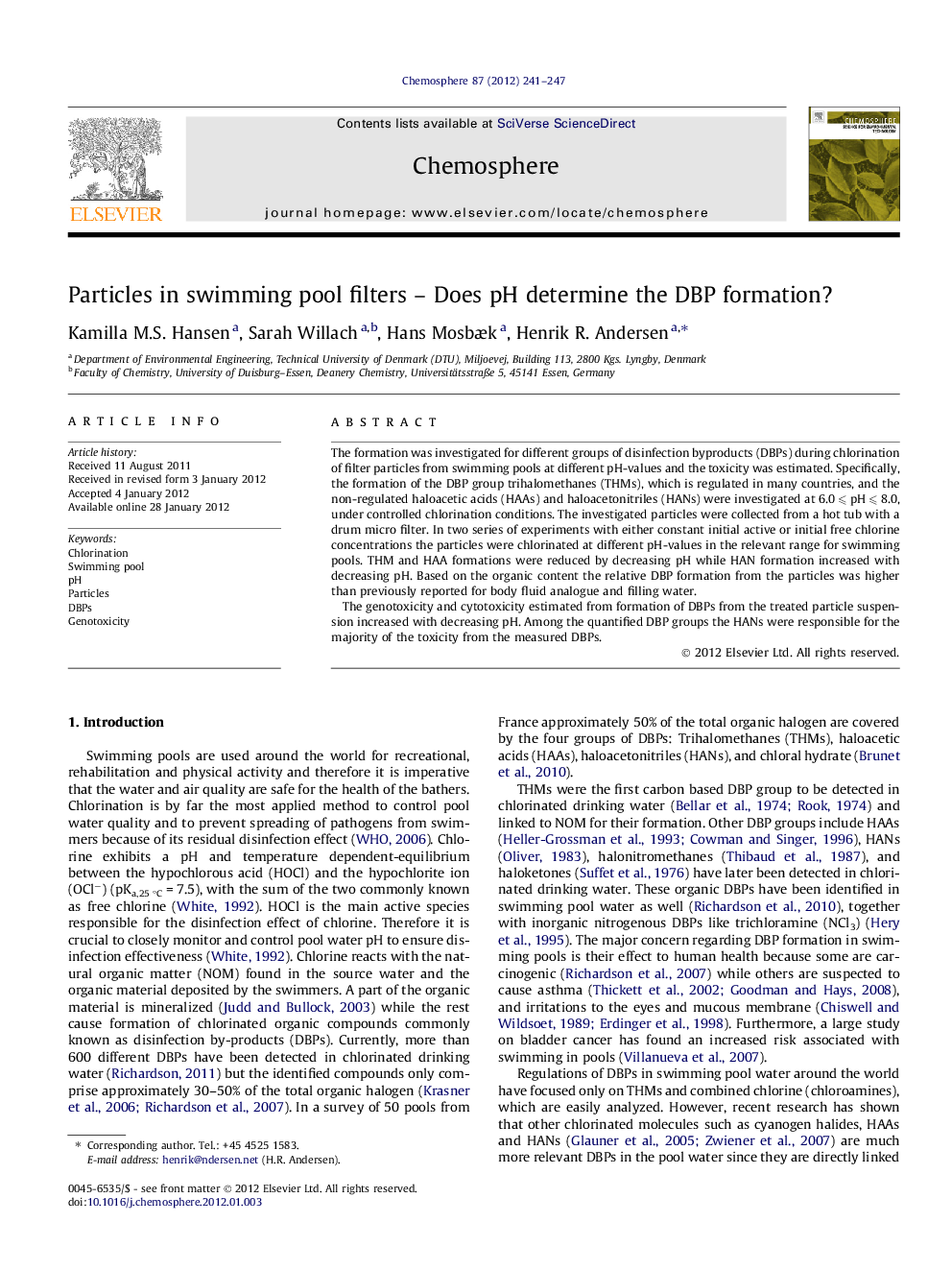| Article ID | Journal | Published Year | Pages | File Type |
|---|---|---|---|---|
| 4410326 | Chemosphere | 2012 | 7 Pages |
The formation was investigated for different groups of disinfection byproducts (DBPs) during chlorination of filter particles from swimming pools at different pH-values and the toxicity was estimated. Specifically, the formation of the DBP group trihalomethanes (THMs), which is regulated in many countries, and the non-regulated haloacetic acids (HAAs) and haloacetonitriles (HANs) were investigated at 6.0 ⩽ pH ⩽ 8.0, under controlled chlorination conditions. The investigated particles were collected from a hot tub with a drum micro filter. In two series of experiments with either constant initial active or initial free chlorine concentrations the particles were chlorinated at different pH-values in the relevant range for swimming pools. THM and HAA formations were reduced by decreasing pH while HAN formation increased with decreasing pH. Based on the organic content the relative DBP formation from the particles was higher than previously reported for body fluid analogue and filling water.The genotoxicity and cytotoxicity estimated from formation of DBPs from the treated particle suspension increased with decreasing pH. Among the quantified DBP groups the HANs were responsible for the majority of the toxicity from the measured DBPs.
Graphical abstractFigure optionsDownload full-size imageDownload as PowerPoint slideHighlights► pH affected the formation of disinfection byproducts from particles in swimming pools. ► THM and HAA formation increased at increasing pH whereas HAN formation decreased. ► The estimated toxicity increased with decreasing pH especially below 7.0.
